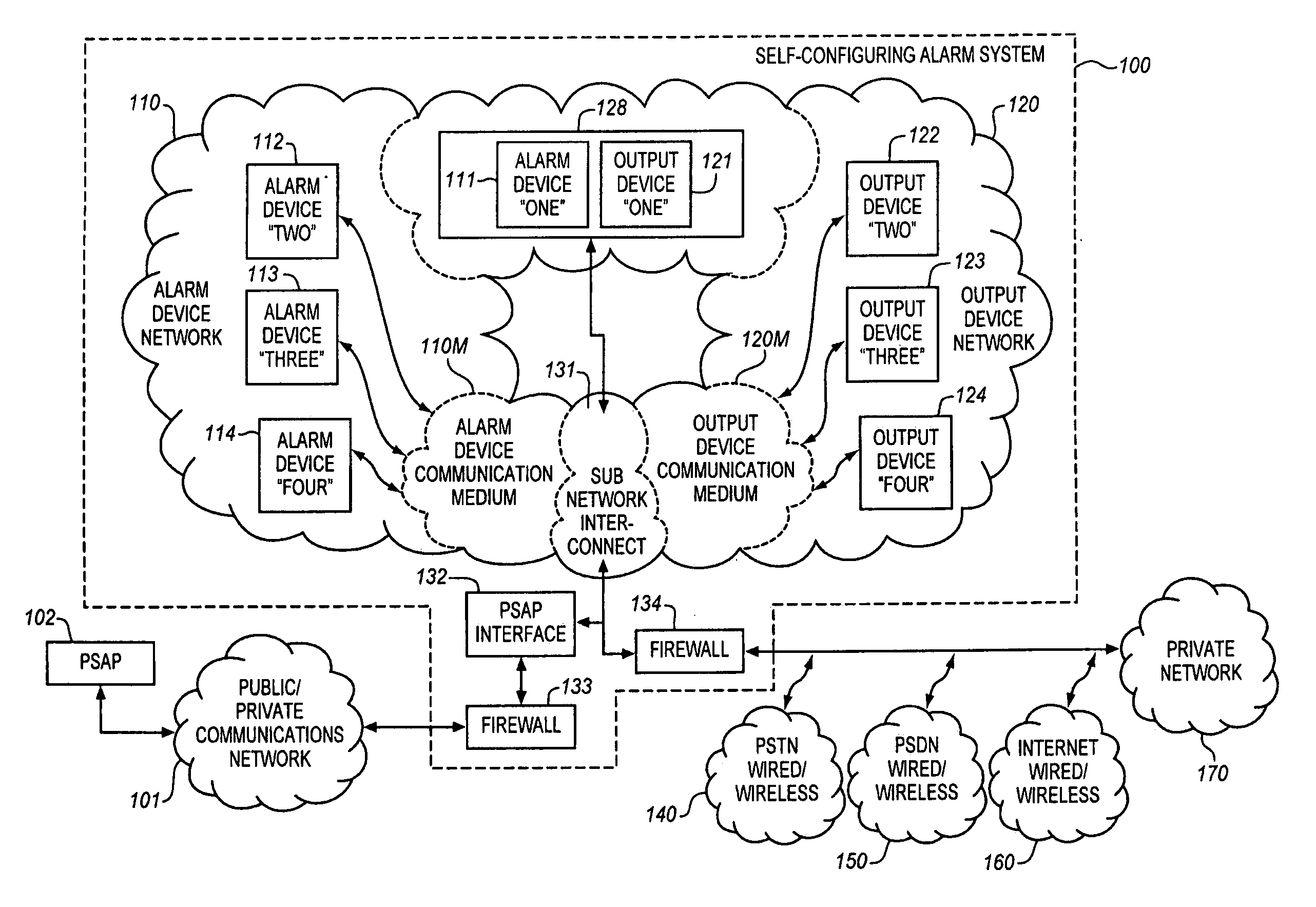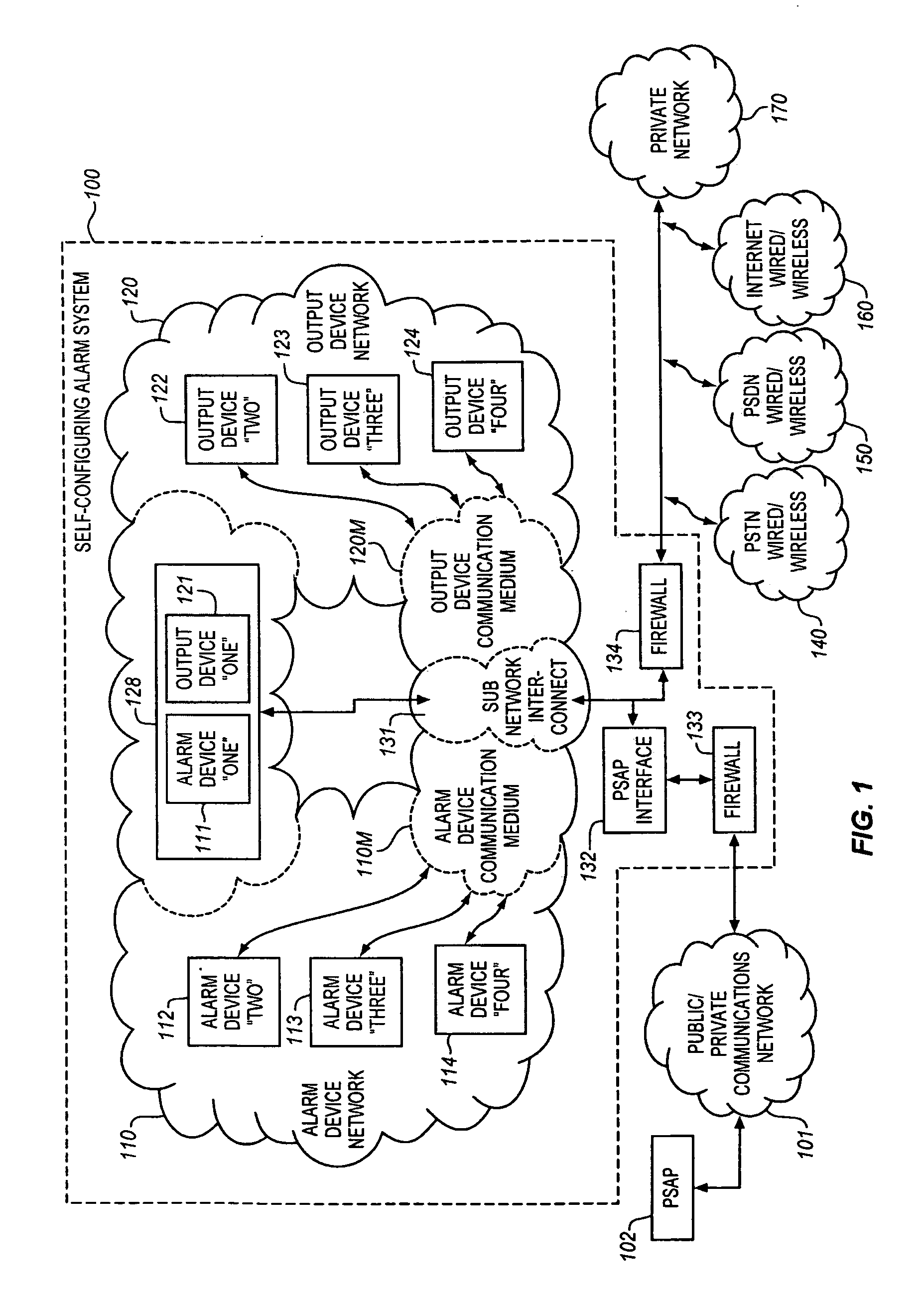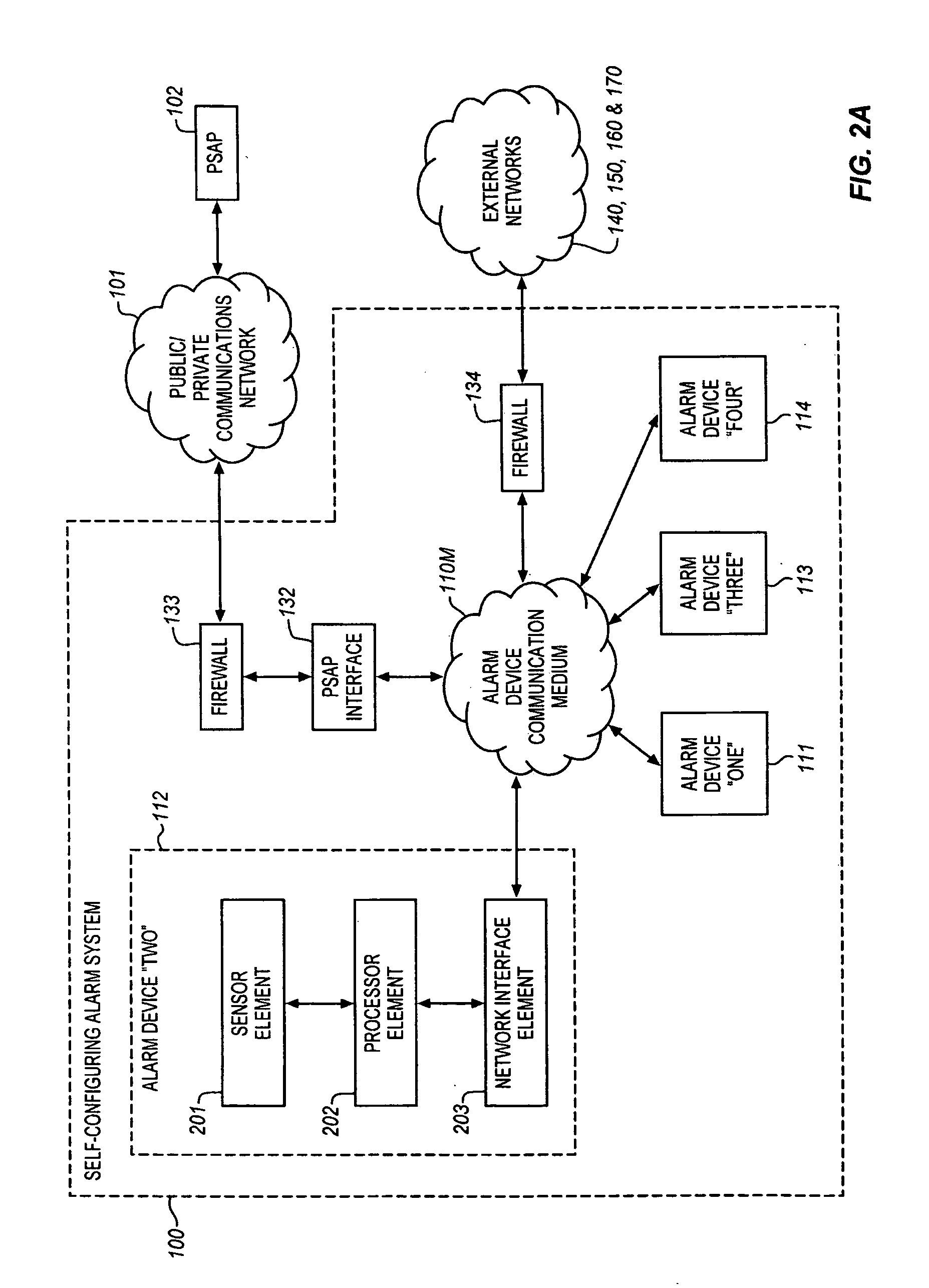Self-configuring emergency event alarm system having connection to a public safety answering point
a technology of emergency event and alarm system, which is applied in the field of self-configuring network of emergency event alarm devices, can solve the problems of limited effectiveness of existing alarm devices and systems, inability of integrated home protection systems to provide an audible alarm that directs the occupants, and other areas of the dwelling to alert other areas, so as to improve the safety of operation
- Summary
- Abstract
- Description
- Claims
- Application Information
AI Technical Summary
Benefits of technology
Problems solved by technology
Method used
Image
Examples
Embodiment Construction
[0021]There are numerous hazards that can be threatening to the occupants of a dwelling (to include but not limited to a factory, office or school campus) or those present in a predetermined locale, and autonomous alarm devices are available to detect the presence of a predetermined level, concentration, or intensity of the hazard and automatically generate an alarm indication, such as a loud sound, to alert the occupants in the vicinity of the alarm device of the presence of the hazard. The present Self-Configuring Alarm System 100, as shown in FIG. 1, includes two conceptually separate yet cooperatively operative sub-networks: an Alarm Device Network 110 and an Output Device Network 120. The Self-Configuring Alarm System 100 dynamically networks a set of individual alarm devices 111-114, which are installed throughout a dwelling or the units of a multiple family dwelling, campus, or other facility, into an ad hoc (or mesh) peer-to-peer network architecture, using a self-configurin...
PUM
 Login to View More
Login to View More Abstract
Description
Claims
Application Information
 Login to View More
Login to View More - R&D
- Intellectual Property
- Life Sciences
- Materials
- Tech Scout
- Unparalleled Data Quality
- Higher Quality Content
- 60% Fewer Hallucinations
Browse by: Latest US Patents, China's latest patents, Technical Efficacy Thesaurus, Application Domain, Technology Topic, Popular Technical Reports.
© 2025 PatSnap. All rights reserved.Legal|Privacy policy|Modern Slavery Act Transparency Statement|Sitemap|About US| Contact US: help@patsnap.com



